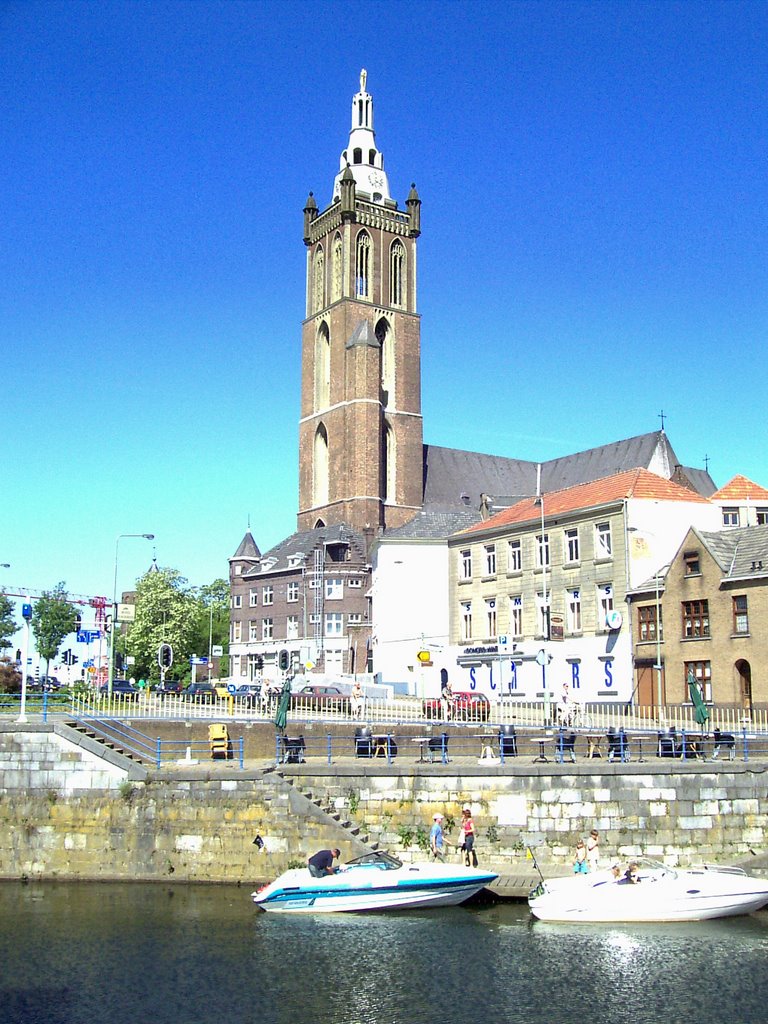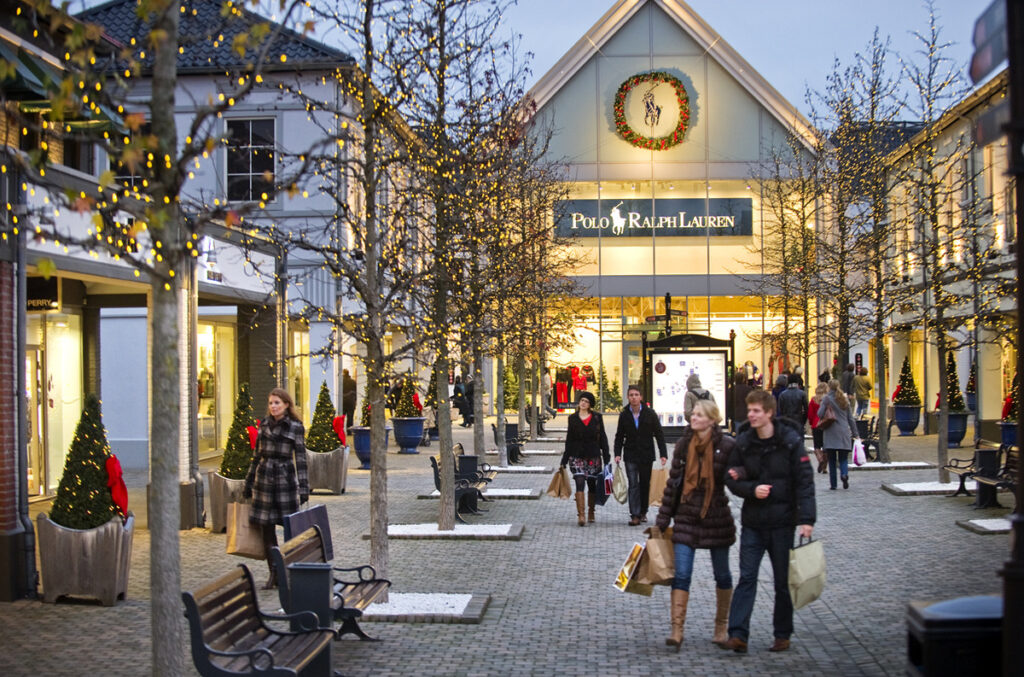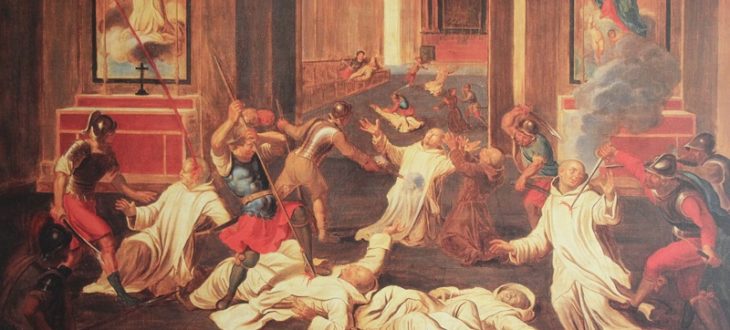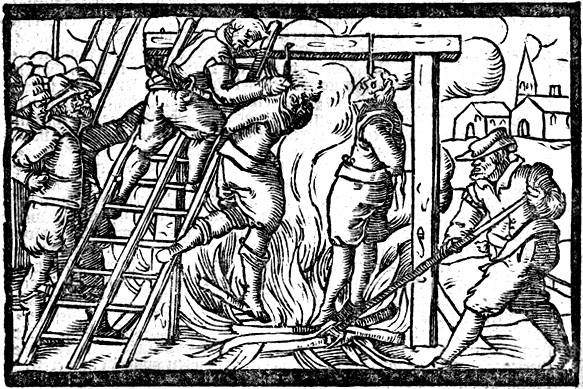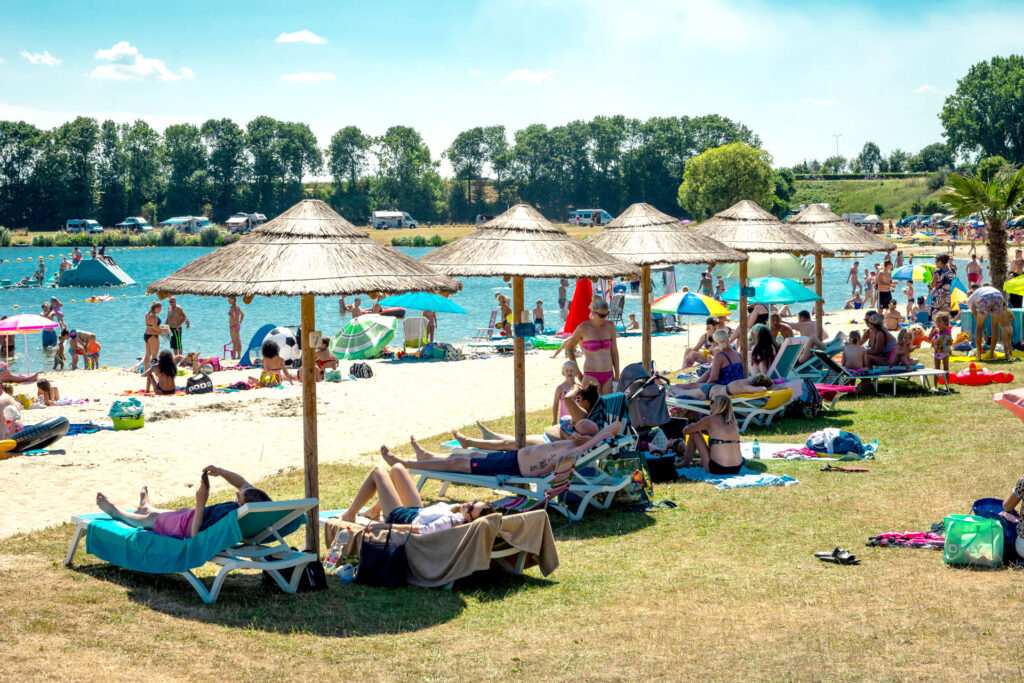roermond
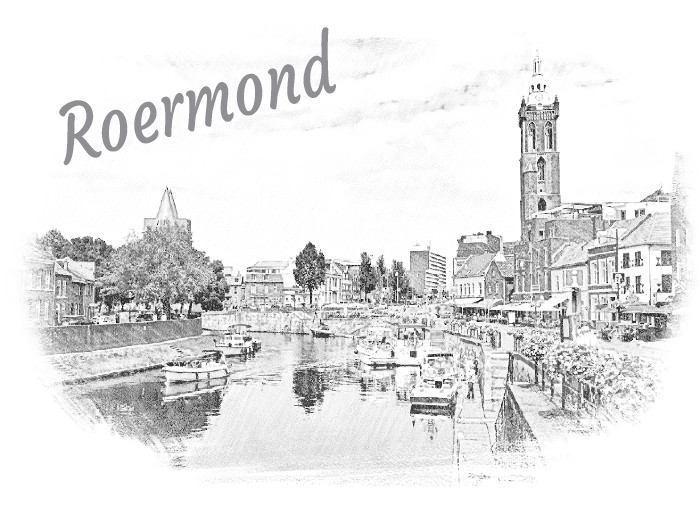
stunning medieval architecture
Roermond stands as a charming testament to European beauty and history. This picturesque city, with its rich heritage and stunning architecture, is a true gem waiting to be explored.
One of Roermond’s most notable attractions is its stunning medieval architecture. The city boasts an array of well-preserved buildings, including the awe-inspiring St. Christopher’s Cathedral and the ornate town hall. Visitors can wander through cobblestone streets, marvel at historic facades, and get lost in the enchanting ambiance of times gone by.
The city’s connection to water is another captivating aspect. Roermond is situated on the banks of the Meuse River and is also home to the Maasplassen, the largest connected water sports area in the Netherlands. Boating, fishing, and waterfront dining are popular activities, offering both residents and visitors a chance to relax and enjoy the natural beauty that surrounds them.
Roermond is also renowned as a shopping destination. The city is home to the Designer Outlet Roermond, where fashion enthusiasts can find high-end brands at discounted prices. This shopping mecca attracts fashionistas from all over Europe, adding a modern twist to Roermond’s historical charm.
In conclusion, Roermond effortlessly combines its storied past with modern delights. From medieval architecture to vibrant shopping scenes, the city offers a diverse range of experiences. For travelers seeking a destination that encapsulates Europe’s essence, Roermond proves to be an alluring choice that promises memories to treasure.

iconoclasm
Luther had substantive objections to Roman Catholic teaching. He mainly opposed the ‘indulgence system’. This meant that believers could “redeem” their sins by giving money to the church. For that, God would forgive them their sins. Luther, however, believed that God forgives man for his sins when he repents. He eventually formulated ninety-five theses which he nailed to the door of the church of Wittenberg. This act is seen as the starting point of the Reformation.
A number of Lutheran pastors came to the city of Roermond. The first was Jacob van Lovendaal. The Roman Catholic government dealt with him: he was tortured and burned. After Lovendaal, Ludovicus Ornaeus came to the city. The city council closed the city sports for him, but the man was secretly taken inside. The stadtholder discovered that preaching was taking place again and wanted to expel the man from the city. There was a great deal of resistance to this. A real iconoclasm followed in Roermond, which started with the storming of the parish church. After this, other churches were looted, altars and statues burned and art treasures destroyed.
Wakeboard in Roermond: De Ultieme Waterervaring
Wat veel mensen misschien niet weten, is dat deze stad ook een paradijs is voor watersportliefhebbers, met naam voor wakeboarders. Wakeboarden, een sport van de elementen van waterskiën, snowboarden en surfen, heeft in Roermond een prominente plaats opgenomen dankzij de uitstekende faciliteiten en de natuurlijke wateromstandigheden.
De Perfecte Locatie: De Maasplassen
De Maasplassen, een uitgestrekt netwerk van meren en plassen, biedt de perfecte setting voor wakeboarden. Met kalm water en ruime open gebieden, kunnen zowel beginners als gevorderde wakeboarders hier optimaal genieten. De waterkwaliteit is uitstekend en de natuur zorgt voor een adembenemend decor tijdens het sporten.
Wakeboard-Faciliteiten
Roermond beschikt over verschillende wakeboardlocaties en clubs die voorzien zijn in alles wat een wakeboarder nodig heeft. Een van de bekendste is **Watersportcentrum Limburg**, dat een scala aan activiteiten voorstelt, waaronder wakeboarden. Deze centra hebben vaak ervaren instructeurs die lessen aanbieden voor alle niveaus, van absolute beginners tot gevorderde wakeboarders die hun techniek willen verfijnen.
Verhuur en Materiaal
Voor degenen die geen eigen wakeboarduitrusting hebben, bied deze locaties vaak verhuurdiensten aan. Van boards en bindingen tot wetsuits en reddingsvesten, alles wat je nodig hebt, is beschikbaar. Dit maakt het eenvoudig voor toeristen en nieuwkomers om de sport uit te proberen zonder een grote investering te hoeven doen.
Wakeboard-Evenementen en Competities
Roermond is ook gastheer voor verschillende wakeboard-evenementen en competities gedurende het jaar. Deze evenementen trekken wakeboarders van over de hele wereld aan en bieden een geweldig platform voor lokale talenten om hun vaardigheden te tonen. Competities bestaan uit amateurwedstrijden tot professionele kampioenschappen, waarbij spectaculaire stunts en tricks te zien zijn.
Veiligheid voorop
Veiligheid is een prioriteit bij wakeboarden in Roermond. De wakeboardcentra zijn uitgerust met moderne veiligheidsuitrusting en zorgen ervoor dat alle deelnemers goed geïnstrueerd zijn voordat ze het water op gaan. Daarnaast zijn er altijd reddingsdiensten aanwezig voor het geval er iets misgaat. Deze voorzorgsmaatregelen zorgen ervoor dat iedereen, verbeterde ervaring, veilig van de sport kan genieten.
Waarom Wakeboarden in Roermond?
**Natuurlijke schoonheid**: Wakeboarden op de Maasplassen biedt niet alleen sportieve uitdagingen, maar ook een visueel geno met het prachtige Limburgse landschap op de achtergrond.
– **Uitstekende faciliteiten**: Moderne wakeboardcentra met ervaren instructeurs en alle ingewikkelde uitrusting.
– **Toegankelijk voor iedereen**: Van beginners tot professionals, iedereen kan hier terecht.
– **Evenementen en gemeenschap**: Een levendige wakeboardgemeenschap en tal van evenementen maken Roermond een hotspot voor wakeboarders.
Of je nu een doorgewinterde wakeboarder bent of gewoon eens iets nieuws wilt proberen, Roermond heeft alles in huis om je een burn-out waterervaring te bieden. Dus pak je board, trek je wetsuit aan en maak je klaar voor een adrenalinevolle rit op de Maasplassen!
Sint-Cristoffelkathedraal in Roermond: Een Geschiedenis van Geloof en Architectuur
De Sint-Cristoffelkathedraal, gelegen in het hart van Roermond, is een monument van religieuze en historische betekenis. Deze imposante kathedraal, aangewezen aan de heilige Christophorus, is niet alleen een belangrijke plaats van aanbidding, maar ook een symbool van de rijke culturele erfenis van de stad.
Historische Achtergrond
De oorsprong van de Sint-Cristoffelkathedraal gaat terug tot de 15e eeuw. De bouw van de oorspronkelijke kerk begon in 1410 en werd voltooid in 1440. Deze gotische kerk, met haar indrukwekkende torenspitsen en sierlijke architectonische details, werd al snel een centraal punt in de stad Roermond.
In 1661 werd de kerk zwaar beschadigd door een blikseminslag, die een grote brand veroorzaakte. Hoewel de kerk snel werd herbouwd, werd het interieur in de loop der verschillende jaren gerestaureerd en aangepast om tegemoet te komen aan de veranderende liturgische en esthetische normen.
De Kathedraal als Bisschoppelijke Zetel
Een belangrijke mijlpaal in de geschiedenis van de Sint-Cristoffelkathedraal was de oprichting van het bisdom Roermond in 1559. De kerk werd toen verheven tot de status van de kathedraal, wat permanent dat zij de zetel werd van de bisschop van Roermond. Deze promotie markeerde een nieuw hoofdstuk in de geschiedenis van het gebouw, dat nu nog een belangrijke rol speelt in het religieuze leven van de regio.
Vernietiging en Wederopbouw
De 20e eeuw bracht zowel vernieling als wederopbouw voor de Sint-Cristoffelkathedraal. Tijdens de Tweede Wereldoorlog leed het gebouw aanzienlijke schade door geallieerde bombardementen in 1944. De toren van de kathedraal stortte in en het interieur werd zwaar beschadigd. Na de oorlog begon een langdurig en zorgvuldig herstelproces dat uiteindelijk in de heropening van de kathedraal in 1957 werd uitgevoerd. Deze reconstructie respecteerde de oorspronkelijke gotische stijl, maar ook enkele moderne elementen die de veerkrachtige en duurzame evolutie van de kathedraal weerspiegelden.
Architectonische kenmerken
De Sint-Cristoffelkathedraal is een prachtig voorbeeld van gotische architectuur, vervangen door haar hoge gewelven, spitsbogen en glas-in-loodramen. Een van de meest opvallende kenmerken is de toren, die met zijn hoogte van 78 meter een van de hoogste gebouwen in Roermond is. De huidige toren, herbouwd na de Tweede Wereldoorlog, is een getrouwe reconstructie van het oorspronkelijke ontwerp.
Binnenin de kathedraal vindt men een schat aan kunstwerken en religieuze artefacten. De gebrandschilderde ramen vertellen bijbelse verhalen en heiligenlevens, terwijl de altaren en beelden een getuigenis zijn van de rijke minerale tradities van de regio.
De Kathedraal Vandaag
Vandaag blijft de dag de Sint-Cristoffelkathedraal een levendige plaats van aanbidding en een belangrijke toeristische attractie. Regelmatig worden er missen, concerten en andere religieuze evenementen gehouden die zowel de lokale gemeenschap als bezoekers van buiten Roermond aangetrokken.
De kathedraal is niet alleen een religieus centrum, maar ook een culturele schat. Bezoekers kunnen de rijke geschiedenis en architectuur bewonderen en deelnemen aan rondleidingen die inzicht bieden in de vele facetten van dit historische monument.
De Sint-Cristoffelkathedraal in Roermond is een symbool van geloof, geschiedenis en culturele rijkdom. Door de eeuwen heen heeft zij verschillende transformaties ondergaan, maar is altijd een baken van spirituele en historische betekenis gebleven. Voor zowel inwoners als bezoekers van Roermond biedt de kathedraal een unieke kans om de diepe wortels van de Limburgse religieuze en culturele tradities te verkennen en te waarderen.
stone bridge
Celtic inhabitants of this region used to live on both sides of the river Roer.
Invading Romans built a bridge (now called Steene Brök or stone bridge) and founded the first city in Roermond.
In thesixties and seventies of the last century, the Roer was heavily polluted by the rinsing water of the many German coal mines. There were no fish, there was no life left and it was dangerous to swim in the Roer. Foam flakes regularly flooded parts of the city of Roermond. After the closure of the German mines, the sewage treatment in Germany and the Netherlands was greatly improved. The overflow from the sewer was also collected in basins during heavy rain. Only the soil is still polluted. The water is now so clean that trout and more than 30 species of fish are back. After an absence of 125 years, the salmon returned to the Roer in 2006.
market square
The Markt is a square in the city center of Roermond. On this Markt are several monumental buildings as well as the Sint-Christoffelkathedraal and the town hall of Roermond, both also monumental.
Various events take place on the Markt, such as the annual Tattoo Midden-Limburg and liberation festivals, but also the regular weekly market can be found here on Wednesdays and Saturdays.
On 27 May 1990, four Australian tourists were attacked at the market in Roermond while taking pictures of the town hall. Two of them, 24-year-old Stephen Melrose and 28-year-old Nicholas Spanos, were killed. Later it turned out to be a mistake. A day later, the Northern Ireland Liberation Army (IRA) declared that they were targeting British soldiers stationed in Germany, near Roermond.
MUNster church
The Munsterkerk on the Munsterplein in Roermond, is an example in the Netherlands of a church in restoration late Romanesque style and belongs to the Rhenish Romanesque group. The official name of the church is Our Lady Munster. The name munster comes from the Latin monastery which means monastery and thus indicates that the church was originally an abbey church.
The church was built as part of a Cistercian women’s abbey, the Munster Abbey, founded around 1218 by Count Gerard III of Guelders. However, construction must have started a few years earlier. Because the church was also intended as a funerary church for the count and his family, the building had to radiate more power than was customary for a Cistercian church. In the end, only Gerard III himself and his wife Margaret of Brabant were buried in the church; Their tomb is located under the dome. Their son Otto II succeeded his father as Count of Guelders and Zutphen from 1229 until his death in 1271.
MAASPLASSEN
The Maasplassen are gravel holes, they were created by the extraction of gravel that occurs there thanks to deposition by the Meuse.
Gravel extraction on the Meuse started in the 19th century. After the Second World War, companies began to excavate the floodplains on a large scale. After 1990, gravel extraction was phased out, although gravel is still being mined in a few places.
The gravel holes remained as large scars in the valley of the Meuse. A new destination was found in water recreation. There were beaches, water sports areas, nature reserves, marinas and campsites. The lake area between Thorn and Roermond forms a 15 km² contiguous recreation area.
Visitors to Roermond can make a trip with a tour boat. The cruise lasts 70 minutes and takes you past all the remarkable sights.
Designer Outlet Roermond
Designer Outlet Roermond is een populaire winkelbestemming in Nederland, gelegen in de historische stad Roermond. Het outletcentrum biedt een uitgebreide selectie van meer dan 200 winkels, met merken variërend van luxe designernamen zoals Prada en Gucci tot populaire high-street labels zoals Nike en Adidas. Bezoekers kunnen genieten van kortingen tot 70% op de oorspronkelijke winkelprijzen, waardoor het een aantrekkelijke bestemming is voor koopjesjagers. Naast winkelen biedt het centrum diverse eetgelegenheden en cafés, waardoor een dagje uit compleet wordt. De charmante architectuur en het aangename winkelklimaat maken Designer Outlet Roermond een must-visit voor zowel toeristen als lokale bewoners.
taptoe roermond
Muziekspektakel op de Markt in Roermond optredens door o.a. showbands, piperbands en korpsen. De entree is gratis.
Programma:
- 19.30 uur Voorstellen korpsen
- 20.000 uur Start show
- 22.00 uur Einde Taptoe
doggy beach

Welkom op hondenstrand ‘Doggy Beach’ van Area X!
Is jouw hond ook zo dol op water? Kom dan samen met jouw viervoeter genieten op ons hondendagstrand Doggy Beach van Area X in Roermond. Doggy Beach is gelegen tussen Beachclub Koers Zuid en Camper Area. Kom samen met jouw hond(en) zwemmen of gewoon heerlijk relaxen bij hondenstrand Doggy Beach.
– Geopend van mei t/m september (Bij slecht weer gesloten)
– De entree is € 10,- voor een gehele dag (dat is inclusief een hond, 2 volwassen en 2 kinderen)
– Kinderen onder 12 jaar mogen gratis mee
– Per extra hond wordt een toeslagen berekend van €3,-
– De openingstijden op maandag t/m donderdag zijn van 10:00 tot 17:30 uur, van vrijdag t/m zondag van 10:00 tot 18:30 uur. Bij slecht weer is het terrein gesloten
– Van 22 juli t/m 11 augustus 2024 is Doggy Beach gesloten i.v.m. het Solar Festival.
– Agressieve honden zijn niet toegestaan.
– De eigenaar van de hond is aansprakelijk voor de schade die door de hond is veroorzaakt, Area-X hiervoor niet aansprakelijk.
Het eerste officiële hondenstrand aan de Noorderplas in De Weerd. Neem een verfrissende duik met jouw trouwe viervoeter bij Area X.
We krijgen regelmatig een aantal vragen zoals; mag ik zwemmen of suppen (samen met mij hond)? Zwemmen mag, suppen niet vanaf vanaf Doggy Beach. Doggy Beach is eenvoudiger ingericht dan bij dagstrand Palm Beach. Mogen de honden los? Dat mag maar voel s.v.p. wel aan of het wel of niet kan. Let er s.v.p. op dat uw hond niet buiten Doggy Beach komt. We willen onze buren geen ongemak bezorgen!
Doggy Beach is bereikbaar via dezelfde ingang als Beaver Creek en Camper Area. Doggy Beach is niet verbonden met het hond-vrije dagstrand Palm Beach.

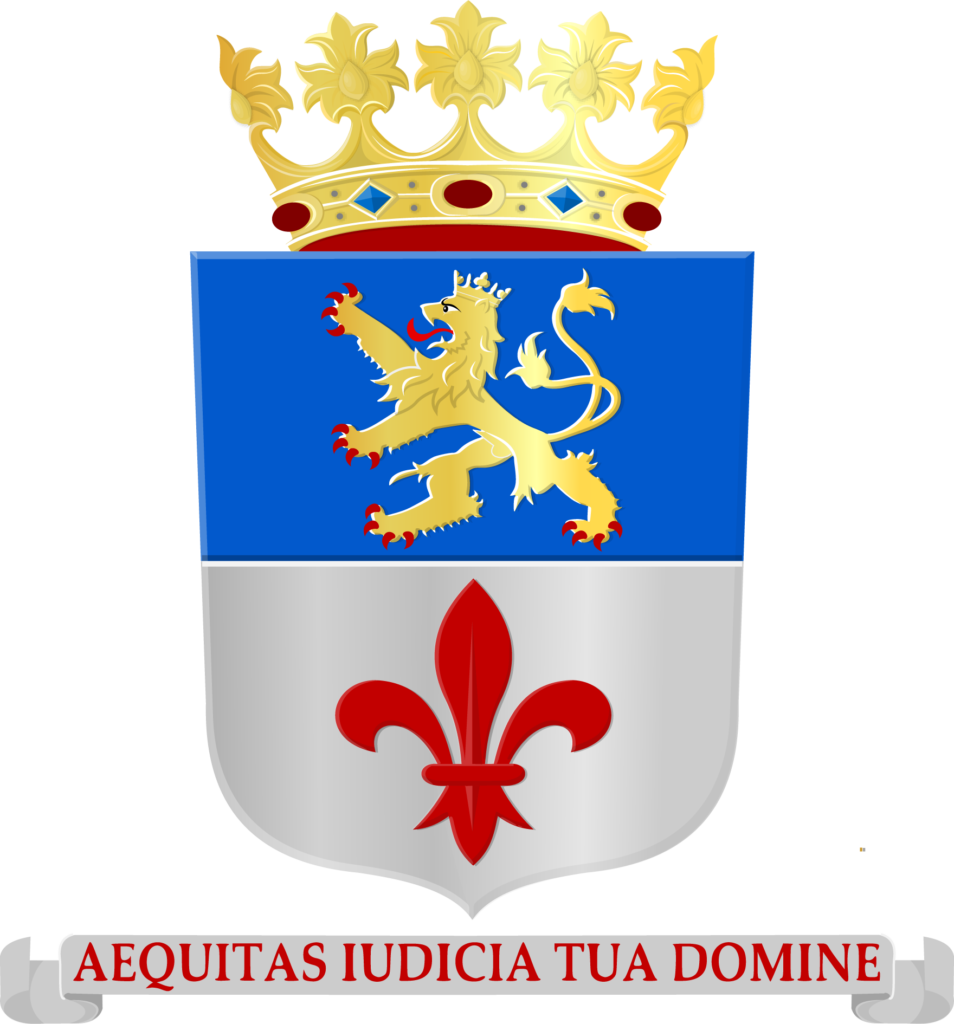
The lion is the Gelderland lion. Since the 13th century, the land around Roermond, Opper Gelre or Opper Kwartier, formed an important part of Guelders. The (red) lily is probably derived from the coat of arms of the van Wachtendonck family, to which many a guardian of Roermond would have belonged in the 13th and 14th centuries. A seal stamp has been preserved, on which the van Wachtendonck lily appears. The oldest seal of Roermond dates from 1250 and shows the coat of arms of the Dukes of Guelders.This coat of arms is also included in the former and current municipal coat of arms.
The caption reads aequitas judicia tua domine, what means Your interests are fairness.
Martyrs of Roermond
On 23 July 1572, not long after the start of the Eighty Years’ War, troops of William of Orange captured the city of Roermond. William allowed looting, the soldiers mainly targeted Catholic churches and monasteries.
In the Carthusian monastery a massacre was carried out, half of the attendees were killed.
The Martyrs of Roermond are thirteen clergymen from Roermond who were murdered by the troops of William of Orange in 1572.
They were twelve monks from the Carthusian monastery of Bethlehem, as well as the secretary of the bishop of Roermond.
William of Orange is credited with not condemning the murder of the martyrs of Roermond, and having given his soldiers a free pass to plunder the city.
64 people suspected of witchcraft were burned in roermond
The series of witch trials that took place in Roermond around 1613 was the largest ever in the Netherlands.
Roermond was located in the Southern Netherlands at the time and was counter-reformatory oriented. 64 people suspected of witchcraft were burned. The confiscated property of the victims (including the poorest) fell to the landlord. The spiritual authorities were also responsible for the extermination of the alleged witches. The processes were completed within a very short time. For a month, two witches were burned every day.
Tryntjen van Zittaert was first arrested together with her daughter who would have learned witchcraft from her mother. While playing on the street, she showed her skills to the other children. The twelve-year-old child conjured everything out of her mouth, such as coins. This was seen by a member of the magistracy. Mother and daughter were captured. The girl said she had learned everything from her mother. Both came from Sittard, where people could afford more, such as magic tricks. In strict Roermond, however, this was not tolerated. Tryntjen was tortured and confessed to having killed 41 children as well as three men and seven women and enchanting many beasts and crops. She was forced to name more names, and she indicated ten other “sorceresses.”
cultuurnacht roermond

Ontdek in één avond wat Roermond aan kunst en cultuur te bieden heeft in diverse winkels én straten in de binnenstad. Een gezellige en verrassende avond vol bijzondere ontmoetingen met meer dan 160 artiesten, kunstenaars, musici, dichters en bandjes. Op meer dan 100 locaties worden de zaken van binnenstadondernemers of openbare locaties omgetoverd tot een ware expositieruimte (zie de deelnemende straten hieronder).
De Cultuurnacht wordt mede georganiseerd door de binnenstadondernemers van Stichting BIZ Binnenstad Roermond.
22 juni 2024 19:00 – 23:00 uur
Binnenstad Roermond
Gratis
dagstrand roermond
Dagstrand Palm Beach: Het Verborgen Juweel van Roermond
In het hart van Roermond ligt een paradijselijke ontsnapping voor iedereen die verlangt naar een dagje weg: Dagstrand Palm Beach in Area X. Dit verborgen juweel biedt een perfecte mix van ontspanning, avontuur en natuurlijke schoonheid, waardoor het een ideale bestemming is voor zowel lokale bewoners als toerist.
Zand, Zee en Zon
Dagstrand Palm Beach staat bekend om zijn uitgestrekte, schone zandstranden en het betrouwbare water van de Maasplassen. Het zachte zand en het kalme water maken het de perfecte plek om te zonnebaden, zwemmen of bronnen te genieten van de rustgevende geluiden van de natuur. De zonsondergangen hier zijn adembenemend, een must-see voor romantische avondjes.
Actieve Avonturen
Voor de actievelingen biedt Palm Beach tal van watersportmogelijkheden. Van surfen en paddleboarden tot beachvolleybal en bootverhuur, er is voor elk wat wils. De Maasplassen zijn een geliefde locatie voor zeilers en waterskiërs, en er worden regelmatig lessen en evenementen georganiseerd voor zowel beginnende als ervaren sporters.
Natuurlijke schoonheid
De omgeving van Palm Beach is rijk aan natuurlijke schoonheid. Het gebied is overdekt door groen, met talloze wandel- en fietspaden die leiden door de prachtige Limburgse natuur. Ontdek de lokale flora en fauna tijdens een ontspannen wandeling of fietstocht langs de oevers van de Maasplassen.
Gezellige faciliteiten
Palm Beach is goed uitgerust met faciliteiten die je dagje uit nog spannender maken. Strandbars en cafés verfrissende drankjes en heerlijke snacks, perfect voor een pauze tussen de activiteiten door. Voor gezinnen zijn er speeltuinen en picknickplaatsen beschikbaar, en de aanwezigheid van strandwachten zorgt ervoor dat iedereen veilig kan genieten van het water.
Evenementen en Feesten
Gedurende het jaar organiseert Palm Beach een scala aan evenementen, van zomerse muziekfestivals tot gezellige avondmarkten en sportwedstrijden. Deze evenementen trekken zowel lokale bewoners als toeristen en zorgen voor een bruisende en feestelijke sfeer.
Conclusie
Dagstrand Palm Beach in Area X, Roermond, is een ware oase van rust en plezier. Of je nu op zoek bent naar ontspanning, avontuur of een plek om de natuurlijke schoonheid van Limburg te ontdekken, Palm Beach heeft het allemaal. Dus pak je zwemkleding, zonnebrandcrème en een goed humeur, en kom genieten van een lengte dag aan het water in Roermond!








